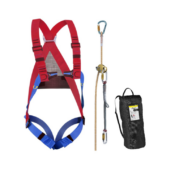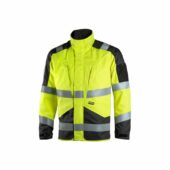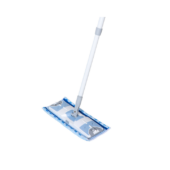Spend analysis compares current and past spending. The effort aims to cut costs, improve strategic sourcing, and boost spend control. To identify patterns, spend data must be converted into KPIs and metrics then visualised.
Data that fits these characteristics is best for analysis:
- All sourcing, procurement, and financial transaction software databases. ERP, GL, eProcurement, and expenditure management
- Normalised for correct association and rolling up.
- Organised by hierarchical taxonomy, preferably by item.
- Enriched to fill required fields.
- Processed by an AI engine, business rules engine, and data-savvy expenditure analysts.
These data settings increase the possibility of reliable, actionable analysis. Data processing will be much faster than with a spreadsheet or rules engine.
Spend analysis traditionally takes months and is laborious. The evaluation is inconvenient to complete more than once or twice a year due to its length. That compels the procurement team to use outdated data and lack visibility into their projects.
A few weeks or days can be saved by processing data using an AI engine. Spend analytics software can compare initiative results to targets when repeated numerous times a year. Spend analysis is more strategic when procurement can modify depending on new facts.
What’s Spend Analysis?
Spend analysis reviews current and historical company expenditure to find cost-cutting options, improve strategic sourcing, and lower procurement prices.
Three primary aspects make up spend analysis:
- Clean spend data, KPIs, and other measures provide spend visibility from multiple angles.
- Spend Analysis—Asking questions about company spending and procurement, finding answers in measurements, and reducing costs and improving results.
- Adjusting procurement processes to fit company goals based on analysis results.
Spend Visibility
Spend Analysis requires precise purchase data from all sources to measure sourcing variables over time. KPIs measure previous and present process performance. KPIs and indicators help understand procurement data, whether it’s a spreadsheet chart from last quarter or Spend Analysis software with years of data.
You can’t save what you can’t see.
Spend Analytics KPIs and Metrics Data Collection and Processing
We all know “Garbage In, Garbage Out”. This applies to procurement cost analysis. Most procurement teams use this technique to get granular data for accurate results.
Determine all procurement and sourcing data sources.
ERPs, e-procurement software, expenditure systems, P-cards, and general ledgers are data sources. Collect spend data from all departments, businesses, and factories. Remember, direct and indirect expenses should be examined.
Combine data in one place.
Data sometimes comes in diverse forms, currencies, or languages, making compilation problematic. To solve these problems, ETL processes are built. Automatic variance and ETL handling is done by Spend Analytics. Procurement analysts must process spreadsheet discrepancies or use a data management tool.
Clean data for better processing.
In addition to language and currency, product and supplier names and descriptions are compared and normalised. For instance, three business units may acquire Dell laptops under various supplier names—DELL, Dell Technologies, Dell, Inc. Standardising sourcing data simplifies interpretation for firms, robots, and algorithms.
Increase data for comprehensive entries and metrics.
Different fields of data from different sources may cause complications when combined. Missing fields, abbreviations, and misspellings are common. Smart data combination creates more complete item entries. Add other data sources like industry codes, supplier variety, and ISO certifications to improve data analysis.
Organise materials into logical hierarchies.
The taxonomy of expenditure data helps procurement experts track where money is spent. UNSPSC, NAICS, and eClass are classification standards. All spend, including marketing, travel, office supplies, and legal services, must be appropriately classified, regardless of the classification scheme used. Spend statistics become more comprehensive and useful with greater categorization. Classifying might take months and be tiresome. Spend Analytics with an AI-powered classification engine can cut that time to days and automatically classify 60-70% of first pass data. The system improves with human review and correction, categorising more each time. Analysis solutions like this might have a near-immediate ROI due to time and resource savings.
Spending Analysis
Data analysis is the most important part of procurement expense analysis. Data analysis software helps your firm satisfy regulations, identify savings opportunities, and illustrate purchasing patterns.
The study gives you visibility to be strategic and talk to suppliers intelligently. Spending analysis can discover process improvements including buying from preferred suppliers, decreasing category providers, and other typical scenarios.
Spend analysis follows data collection, cleansing, and classification. From clean, accurate, granular data, KPIs and spend analytics can be calculated. These figures are best comprehended in charts and graphs that indicate patterns and anomalies. These graphics are filterable by data granularity and available for several category levels.
Spend analysis yields actionable information in practically every area, from purchase price variance to supplier variety to cross-business unit purchases. The data drives wiser, data-driven business decisions on all company purchases. The study yields actions to boost purchasing efficiency, cut costs, and lower supplier risk.
Procurement Process Enhancements
This is when each initiative gets an owner and implementation begins. Many strategies to improve vendor management include:
- When corporate units buy under one contract, item pricing and terms improve.
- Reduce supplier numbers for specific items or categories to boost efficiency.
- Better supplier negotiations from internal and external pricing benchmarks.
- Cut purchase order processing time.
Some new measures are driven by internal and external compliance, like
- Tier 1 and Tier 2 spending on diverse suppliers—minority, woman, and veteran-owned firms.
- ISO, SOX, SOC2, UL, N95 Quality, Security, and Safety Compliance
- Social, environmental, and governance initiatives
Another analysis is needed to measure improvement. A smart spend analysis tool solves this. Based on the previous study, processing more data should be fast and accurate. Real-time findings from processing the newest data reflect initiative progress.
The Power of Spend Analysis
Organisations profit greatly when cost analysis is reduced from a months-long project to a week or few days. The following are reasons to employ cost analysis and new value derived from frequent buying.
Improve Data Quality
Spend analysis begins with collecting, cleaning, normalising, and enhancing all purchase data. Using a portion of the data limits your review and results. Unscrubbed data will have duplicate items and suppliers, hindering supplier consolidation. Remember, Garbage In = Garbage Out.
Increase Saving Chances
Cleaning data provides a solid foundation for trend analysis, KPI measurement, and performance benchmarking. Deeper classification is better for identifying trends and actionable insights.
Classify Taxonomy
UNSPSC and eClass are standard taxonomies. Companies must assess if the taxonomy fits their business and is complete enough for analytics.
Building Maintenance is on Level 3 of Level 1 Facilities [Facility > Facility Services > Building Maintenance]. You could cut Building Maintenance costs if an examination indicated it’s far greater than benchmarks. Without other information, the project would have to investigate what building maintenance aspect caused the high cost. Since Building Maintenance contains over eight distinct subcategories, finding the source may take time.
However, a Level 4 Facilities taxonomy could simplify the initiative. Level 4 categories have a few suppliers each. The research can identify overpriced sellers and items. Spend statistics become more comprehensive and useful with greater categorization. Granular data and Level 4+ categorization speed up problem identification and save procurement costs.
Benchmarking Improves Performance
A comprehensive taxonomy and clear classified data make procurement performance comparisons easy. Comparing company units or locations internally might help you find and fix spending outliers. To increase efficiency, compare procurement process KPIs like PO approval time.
Use third-party benchmarks to supplement your data and compare to similar-sized organisations to improve. Whatever benchmarking you choose, it can lower material and supplier costs through price reductions and company expenses through efficiency increases.
Manage Supplier Risks and Relationships
Human trust and understanding make supplier relationships work best. You should still undertake a thorough analysis.
A procurement study might find vendors and items shared by departments or business divisions. Plus, you can see how much of this spend is contracted. Prepare for negotiations using data to get bulk discounts, better payment terms, and greater contract spend. Supplier transparency enables smart sourcing.
Regional and global events have interrupted material and part availability in recent years. After a 9.0 earthquake and tsunami hit Japan in 2011, the Fukushima Daiichi Nuclear Power Plant accident affected global IC chip and automotive components supplies. The 2020 COVID-19 pandemic shut down all Chinese factories for months. Evaluate single-source materials or vendors from the same region to manage supply chain risk. When Chinese manufacturing plants shuttered, many companies had to buy PPE from outside China.
Internal and external governance and compliance standards have created new supplier management areas. ISO 9001 (Manufacturing Quality), ISO 13485 (Medical Devices), UL V-0 (Material Flammability), SOX, and SOC are long-standing quality, security, and safety standards.
ESG norms are becoming more prevalent. Due to public demand for change, measurement, and openness, expenditure on diverse suppliers—minority-, women-, and veteran-owned businesses—is recorded. Some federal contracting organisations must track Tier 1 (Direct Diverse Spending) and Tier 2 (Diverse Spending by Tier1 Suppliers) since they obtain credit for both and diversity compliance. Including diversity certificates in data enrichment makes these indicators easy to analyse.
Spend Analytics Visualisers
Visualising data-driven KPIs and metrics aids spend analysis. Several software tools may display data in charts, tables, and graphs for easier comprehension.
Use Spreadsheets
Most people have and utilise spreadsheets. Most organisations give employees spreadsheet-based business software. Thus, spreadsheets are often considered ‘free.’
Advanced pivot tables and cross-tabulation reports are possible in spreadsheets. They can also display data in line, bar, and pie charts. However, spreadsheets for Spend Analysis have significant drawbacks.
Common Spend Analytics Spreadsheet Concerns:
- Error-prone spreadsheets. The University of Hawaii and Dartmouth College found errors in 90% of spreadsheets and 1.7% of formulas. Spreadsheet errors have cost several large companies billions.
- Programming is expensive. Plotting data in pivot tables and charts requires super users and procurement pros. Programming formulas and constructing tables and graphs takes time even for a spreadsheet superhero. While spreadsheet software is free, team time is not.
- Sharing and editing can compromise security and revision. Share spend analytics to maximise their value. To see data in their preferred format, employees copy them to their computers and alter them. The original spreadsheet could be overwritten without protections. A laptop with a spreadsheet copy could be stolen, putting your personal data at risk.
Business Intelligence Tools
Business Intelligence tools are nearly 40 years old. However, modern processing and graphics engines make them more powerful.
Like spreadsheets, BI dashboards require a competent BI programmer to display KPIs and metrics. Programmers and procurement specialists must collaborate to create multiple viewpoints. Business intelligence tools create complicated graphs and charts, unlike spreadsheets. These elements can be saved as templates.
Large organisations with BI tools and talented programmers can share procurement data. Companies that utilise BI for operation metrics can integrate that data with spend data to find more.
Business intelligence visualisation requires precise, granular spend data and a mechanism to collect it. Data preparation by hand takes time and many people. Despite covering only 20% of data, business rules can support the process.
Using Procurement Suite
The integrated apps in procurement suites cover several procurement topics. Contract administration, PR/PO processing, reverse auctions, and expenditure management are included.
These are usually good general purchase options. However, these suites were not designed together. They frequently add features or integrate acquired technologies. Suites are usually stronger in the centre. Spend Analytics may lack spreadsheets’ simplicity, BI solutions’ visual capability, and analytics-specific solutions’ AI and complex algorithms.
Spend Analytics-Specific Solution
Strategic procurement specialists realise their team needs precise, high-quality data to analyse. KPIs and measurements come from clean, thorough data. They help the procurement team save money, predict future conditions, and optimise sourcing. Spend analytics solutions use substantial engineering to produce great data.
AI in Procurement
All the following methods sort and categorise data using business rules. Better software employs AI to boost processing speed and accuracy. NLP processes human language data. Normalising supplier names with NLP makes data consolidation easier.
ML lets a model ‘train’ on a data set and apply its learnings to a new one. Trained algorithms process and categorise data faster. ML algorithms finish in days what humans take months. SaaS delivery options offer quicker computers and more storage, enabling AI procurement.
AI helps these SaaS applications grow from reports and visualisation to forecasts and predictions. Spend analysis might become a common procurement tool thanks to analytics software developments. Over time, it will become a continual process.
Dashboards, reports on procurement
The code needs a graphing library to display analytics. Procurement experience is needed to display use case KPIs and metrics on a dashboard. Almost every spend analytics software comes with certain reports and dashboards. You can configure, customise, or create dashboards in most systems. The software’s capabilities determine what you can see and perform immediately.
Steps in Spend Analytics
Start with Analysis Scope and Data Collection
Know what you want before searching for info. Analytics reviews can cover all companies in a multinational conglomerate or only a manufacturer’s direct spend.
Smaller organisations with a single ERP system can easily find data. ERPs, General Ledgers, eprocurement software, expenditure management solutions, and other specialised systems may be needed by larger firms.
Complex businesses, such private equity and holding firms, may struggle due to the variety of software in their divisions, subsidiaries, and acquisitions.
After setting your review scope and identifying the data-storing business systems, bring the data together. How often you calculate analytics determines how you do that.
Exporting data and storing it in a spreadsheet, database, or spending analysis programme is easiest for one-time or infrequent analyses.
APIs and connectors may be worth the effort to automate data extraction and loading if expenditure analytics will become part of your procurement process.
Second step: Validating and cleaning data
Data is checked for completeness and accuracy after collection. Consolidated entries and mapped fields provide a core data collection. Data difficulties include missing descriptions, illegible data, and partial data sets. More detailed data improves analysis.
Data cleansing involves standardising fields. Using several forms for the same field causes confusion and major errors. 02-05-20 could mean February 5, 2020, May 2, 2020, or May 20, 2002, depending on how you interpret numbers. Calculating using various currencies without aligning them will likewise yield erroneous results.
3. Normalise Supplier Names
multiple systems often call the same company by multiple names. Depending on who put up the system. Some companies retain their names and become subsidiaries after mergers or acquisitions. AI-driven analytics solutions normalise all corporate name variants. Normalising supplier names is essential for accurate vendor spend estimates. It finds contracting and bulk discount opportunities.
Step 4: Classify Items and Suppliers
Similar to normalisation, categorization tags related items. For category management, a deep hierarchy taxonomy assists data decomposition. Comparisons of category KPIs and indicators reveal savings insights. Classifying items and suppliers narrows data.
Step 5: Enrich Data
Processing data sets creates KPIs and metrics for basic analysis, such as totals and averages, supplier or category, trends, and year-over-year comparisons. All are based on your data.
Data can be enhanced using external information. Certified varied suppliers, procurement benchmarks, and commodity price are common additions. New data can help compare industry standards or leaders and set new goals.
Step 6: Spend Analysis and Visualisation
Many methods to get enriched data, but themed dashboards let users review areas of interest systematically. If they want to aggregate purchases across fewer vendors, procurement analysts go straight to a commonality report.
Category managers can filter these dynamic reports to focus on their interests. Clicking through reports can generate savings ideas, but it takes time.
The system evaluates typical savings methods, finds ways to save or improve, and rates them for expected savings and difficulty.
Analysts might accept the result or focus the opportunity analysis on a key area or new KPI. This report illustrates the efforts, savings, and order of execution!
Step 7: Launch and execute procurement initiatives
After creating your wave strategy, assign teams and launch initiatives. If you use the correct Spend Analytics system, most of these tasks can be automated.
Common Questions
Spend analysis
Spend analysis involves thoroughly examining current and past organisational spending. This procedure has several critical elements:
- Collecting expense data from around the organisation.
- Errors and inconsistencies are removed to ensure data accuracy and reliability.
- Classifying spending data into groups.
- Analysing categorised spending data with analytical tools.
The main goals of expenditure analysis are:
- Finding ways to cut costs and optimise spending.
- Streamlining procurement and improving efficiency.
- Insights into expenditure trends support smart sourcing.
- Improving supplier relationships by using spending data to make decisions.
Spend analysis shows how money is spent and where it may be improved, helping organisations maximise procurement value. It answers important financial questions such what the organisation is spending money on, who it is spending it with, if value for money is being accomplished, and if there are better procurement possibilities.
Spend analysis is data-driven and helps organisations make informed decisions, optimise procurement processes, and save money and enhance efficiency.
The four stages of spend analysis?
Spend analysis usually has four steps:
- Data Collection: First, gather data from multiple organisational sources. Invoices, purchase orders, contracts, and supplier data are examples. The purpose is to create a complete spending dataset.
- Data Cleaning: After collection, data must be cleaned and standardised. This stage removes duplicates, corrects errors, and ensures data format uniformity. Accurate analysis requires clean data.
- Data Classification: Spending data is categorised here. This classification shows spending patterns. Direct and indirect spending, raw materials, services, capital expenditures, and supplier segmentation are common categorizations.
- The next step is analysing the categorised spending data to gather insights and make informed decisions. This research can discover cost-saving options, negotiate better supplier contracts, optimise procurement procedures, and ensure policy compliance.
An example of expenditure analysis?
A manufacturing organisation aiming to optimise procurement might use spend analysis. The corporation collects and analyses data on all its purchases from the past year, categorising spending into raw materials, maintenance services, and office supplies.
The investigation may reveal that the organisation is overspending on raw materials due to unfavourable supplier contracts. This understanding leads to contract renegotiations and significant cost reductions. They may also find office supply procurement inefficiencies to streamline and cut costs.
What is spend analysis formula?
Spend analysis uses different formulas and measures based on its goals and objectives. Some typical spend analysis formulae and metrics are:
- Spending Analysis Total category or supplier spend/Total spend
- Price Variance: (Current – Previous)/Previous
- Savings Calculation: Previous–current Spend
- Supplier Results: Supplier Quality + On-Time Delivery + Cost Competitiveness
- Sourcing Savings: (Current – New Supplier Cost)/Current Supplier Cost
What insights you desire from your spend analysis and the data determine the calculation.
A expenditure analysis tool?
Spend analysis tools automate and simplify spending data collection, cleansing, categorising, and analysis in an organisation. Organisations with plenty of data need these technologies to efficiently and accurately analyse spending patterns.
Data visualisation, reporting, supplier performance tracking, and trend analysis are common spend analysis capabilities. They help companies find cost-saving options, optimise procurement strategies, and follow procurement policies.
What are spend analysis types?
There are numerous types of expenditure analysis:
- Strategic Spend Analysis: Finds long-term cost-saving potential and improves procurement strategy.
- Operations Spend Analysis: Improves efficiency and procurement policy compliance by analysing daily spending.
- Supplier Spend Analysis: Assesses supplier performance and negotiates improved terms by analysing spending patterns.
- Category Spend Analysis: Analyses product or service spending to find cost-saving and supplier consolidation options.
- Contract Compliance Analysis: Verifies spending against supplier contracts.
An organization’s aims and areas for improvement determine its spend analysis type.
Why do we analyse spending?
Spend analysis is important for many reasons:
- It helps find cost-saving options like negotiating better supplier contracts and minimising wasteful spending.
- Risk mitigation: By analysing expenditure trends, companies can spot hazards and take precautions like diversifying their supply base.
- Supplier Performance: Spend analysis helps companies assess supplier performance and make supplier relationship decisions.
- Compliance: It ensures expenditure follows procurement policies and regulations, reducing non-compliance.
- Strategic insights: It aids long-term planning and decision-making.
ABC analysis in expenditure analysis?
ABC analysis in expenditure analysis ranks goods or suppliers by relevance to an organisation. Prioritises items or suppliers for better analysis and management. ABC analysis categories are usually:
- A Category: High-value items or providers that account for a large part of spending and require tight oversight.
- B Category: Items or suppliers of moderate importance that need regular attention but not as much as A-category items or suppliers.
- C Category: Low-value items or suppliers that dominate transactions but have little expenditure influence.
- ABC analysis helps organisations allocate resources, focus on high-impact areas, and optimise procurement methods.
What are expenditure analysis data collecting best practices?
Data gathering efficiency is key to spend analysis precision. These methods are suggested:
- Gather data from invoices, purchase orders, contracts, and supplier databases to create a comprehensive dataset.
- For consistency and precision, standardise data formats, codes, and units of measurement.
- Data Validation: Check data regularly to find and fix mistakes.
- Integrate data from many departments or systems to get a complete spending picture.
- Timely Data Collection: Collect data regularly to correctly reflect expenditure patterns.
How can spend analysis increase supplier performance?
Using spend analysis to improve supplier performance:
- Supplier Evaluation: Evaluate suppliers’ quality, delivery, and cost competitiveness using spend analysis data.
- Supplier Collaboration: Work with important suppliers to improve and establish mutually advantageous arrangements.
- Supplier Development: Improve supplier performance using supplier development programmes.
- Diversify suppliers to reduce risk.
- Contract Management: Make supplier contracts clear, enforceable, and meet organisational goals.
How does technology affect spend analysis?
expenditure analysis is automated and improved by technology, including expenditure analysis tools and data analytics software. Helps by:
- Automation saves time and reduces errors in data collecting, purification, and categorization.
- Visualising spending data improves insights and decision-making.
- Organisations can analyse spending patterns in real time for proactive decision-making.
- Predictive Analytics: Predicting spending trends and cost savings using previous data.
- Monitoring compliance with procurement policies and laws automatically.
What are frequent spend analysis challenges?
Many spend analysis challenges include:
- Data Quality: Accuracy, completeness, and consistency.
- Integrating data from multiple sources and systems.
- Handling and analysing big data sets.
- Talent and Skills: Data-interpreting analysts.
- Technology Adoption: Using and maintaining spend analysis tools.
- Change Management: Overcoming procurement process resistance.
How often should companies analyse spend?
Spend analysis frequency depends on the organization’s goals and expenditures. Organisations usually include annual spend evaluations in strategic planning. Some companies choose quarterly or semi-annual reviews to track expenditure trends and adjust.
Benefits of category spend analysis?
Benefits of category spend analysis include:
- Cost reduction: Finding ways to cut specific spending areas.
- Assessing category supplier consolidation possibility.
- Risk management: Assessing and mitigating category risks.
- Informing category-specific strategic sourcing decisions.
- Tracking supplier performance by category.
How can spend analysis assure compliance?
Organisations can assure compliance through cost analysis:
- Establish explicit procurement policies and guidelines.
- Automate Compliance Checks: Verify spending against policies.
- Audits: Find and fix non-compliance concerns using periodical audits.
- Supplier Collaboration: Work with suppliers to obey contracts.
- Training: Teach procurement teams compliance requirements.
What makes a spend analysis programme successful?
Considerations for spend analysis success include:
- Executive Support: Get top-management buy-in.
- Check data quality, cleanliness, and reliability.
- Employ skilled analysts and data professionals.
- Clear Objectives: Set analysis goals.
- Invest in appropriate technology and tools.
- Review and improve analysis processes continuously.
- Actionable Insights: Apply analysis findings to decisions.

















